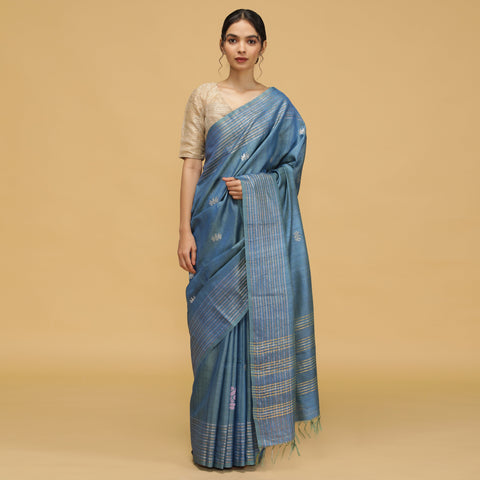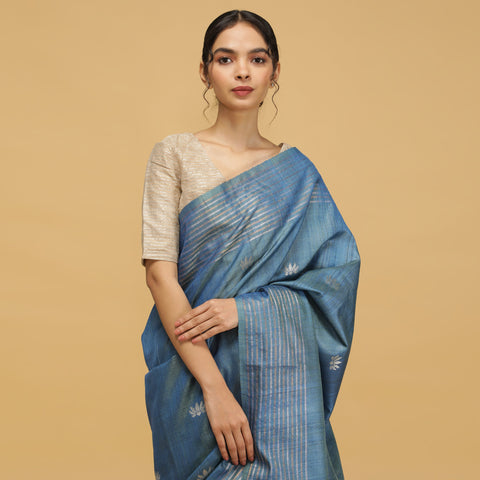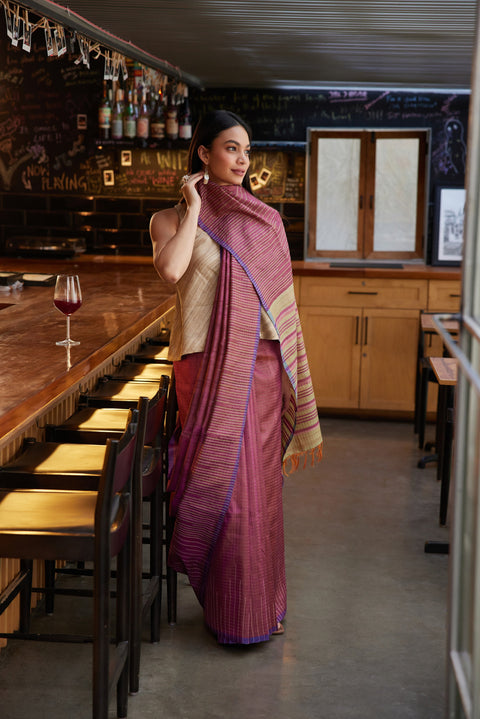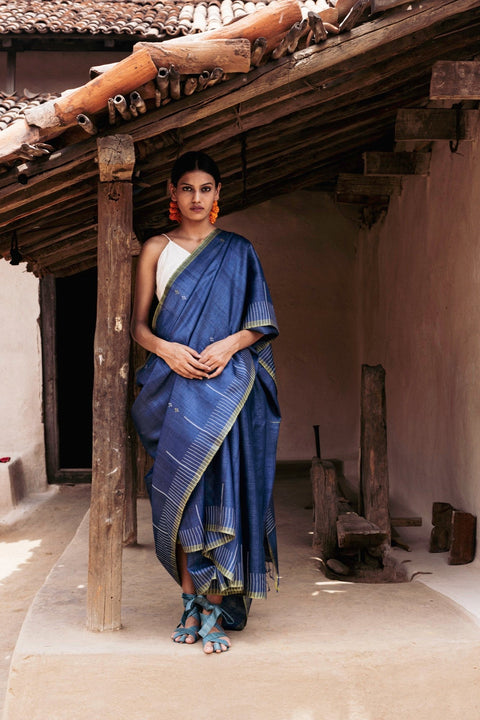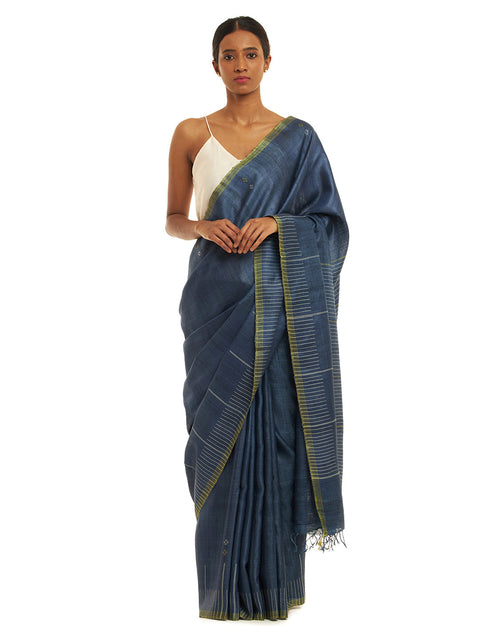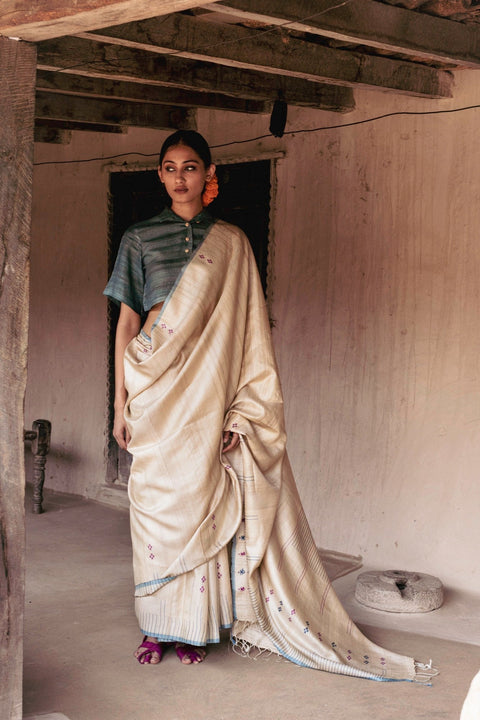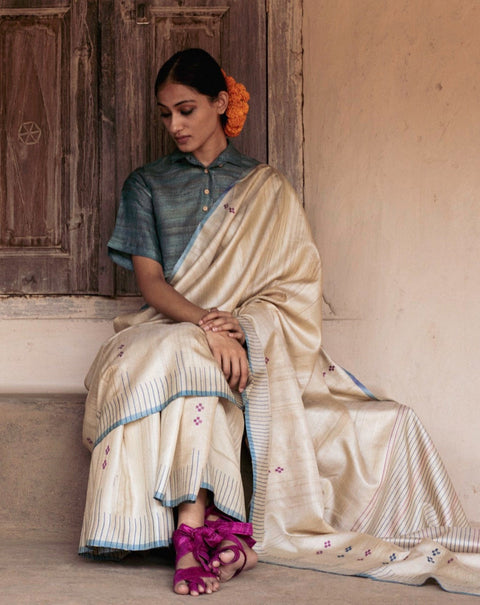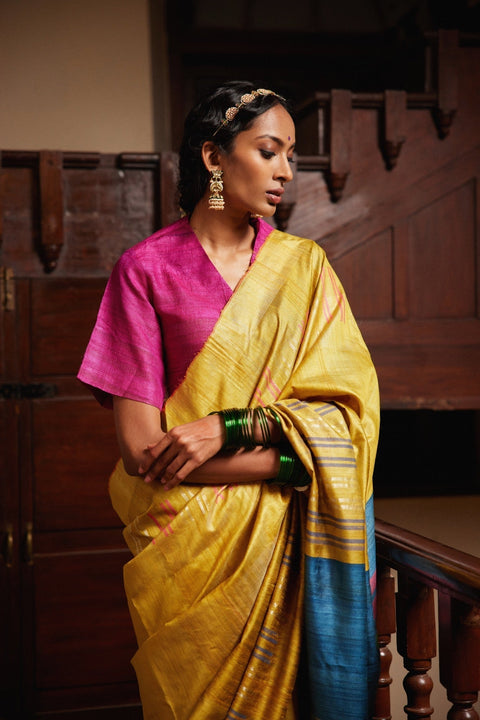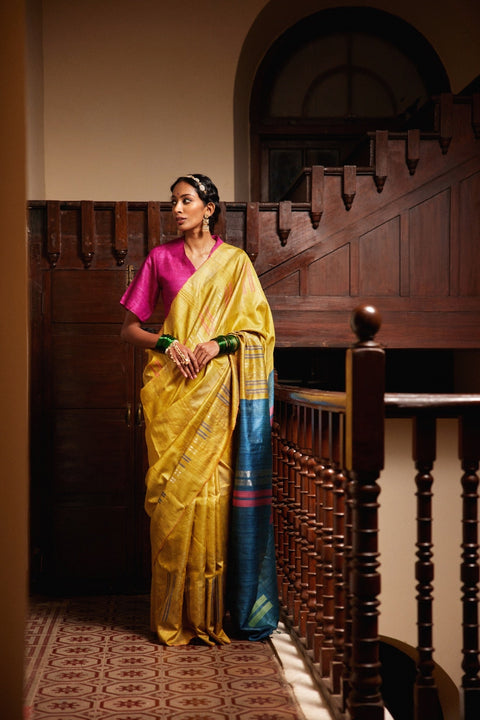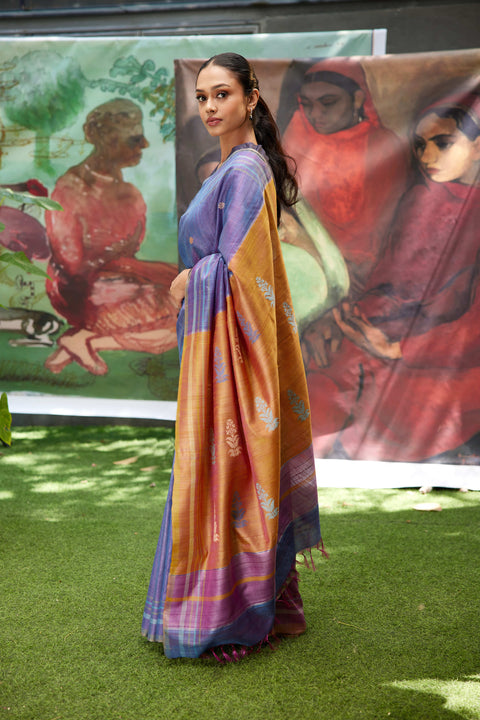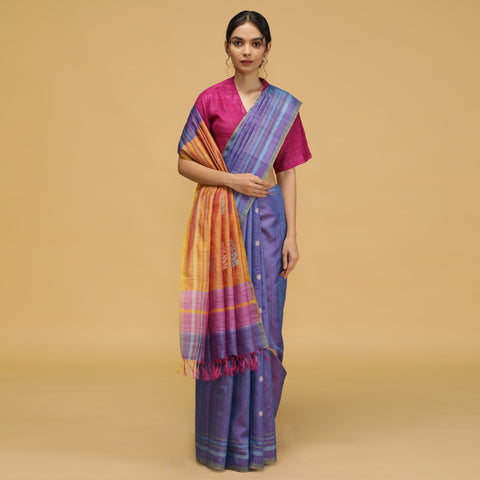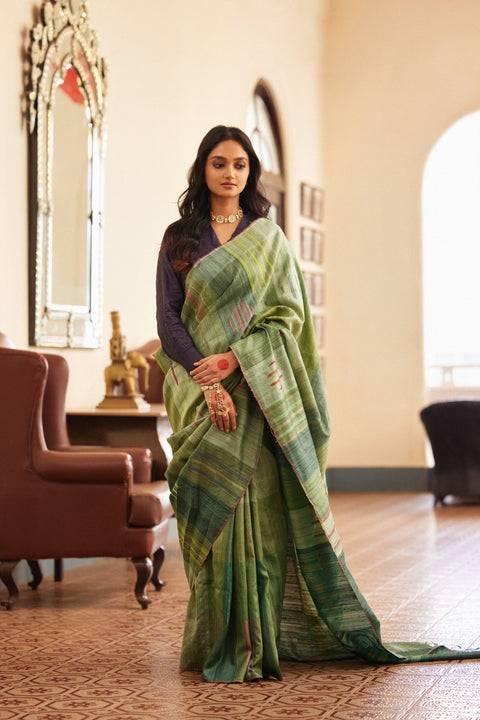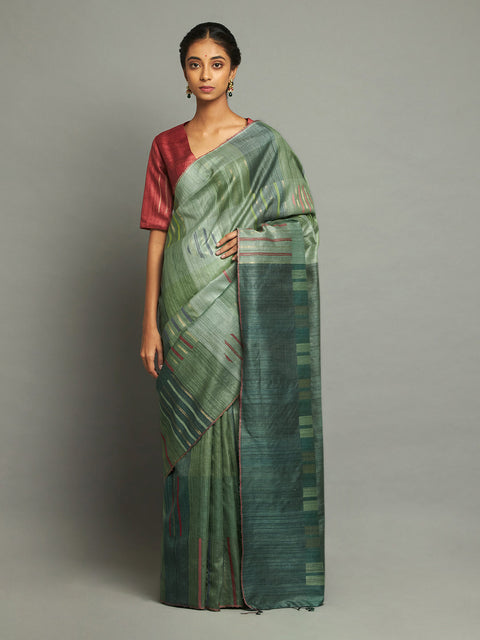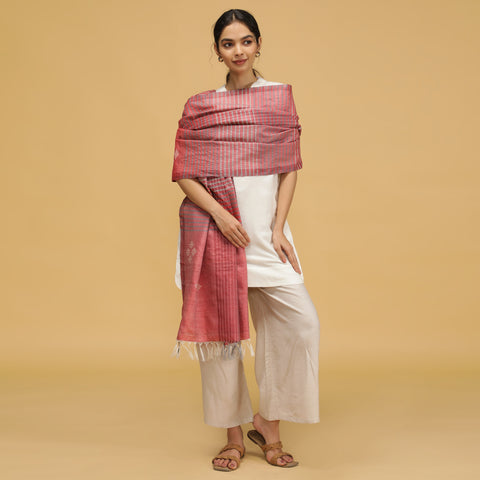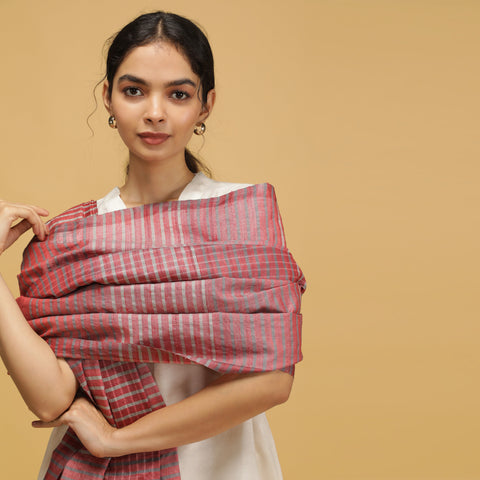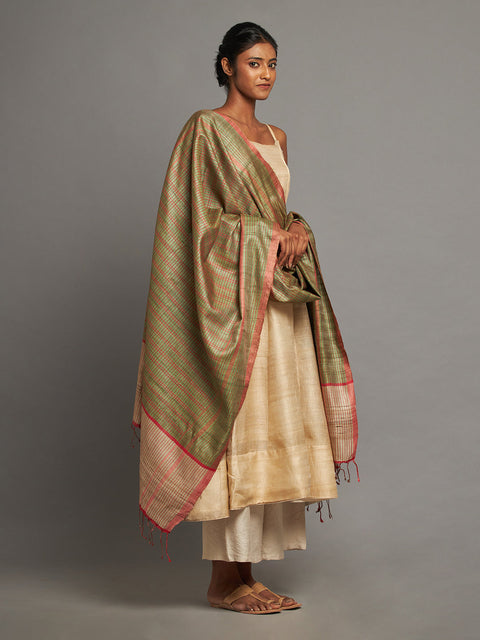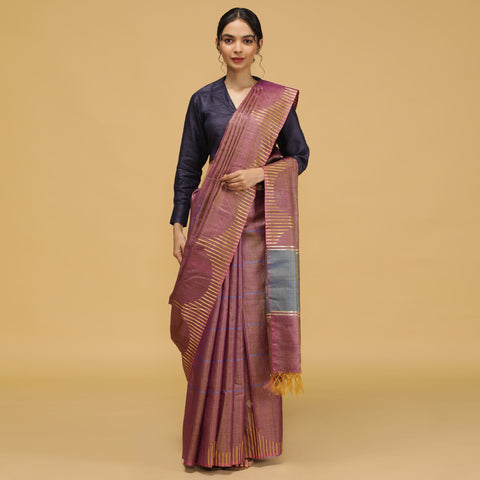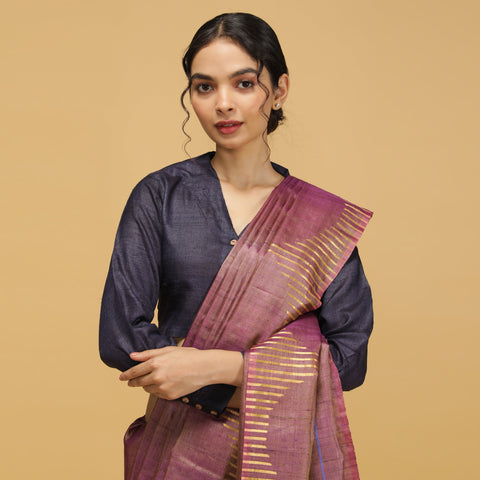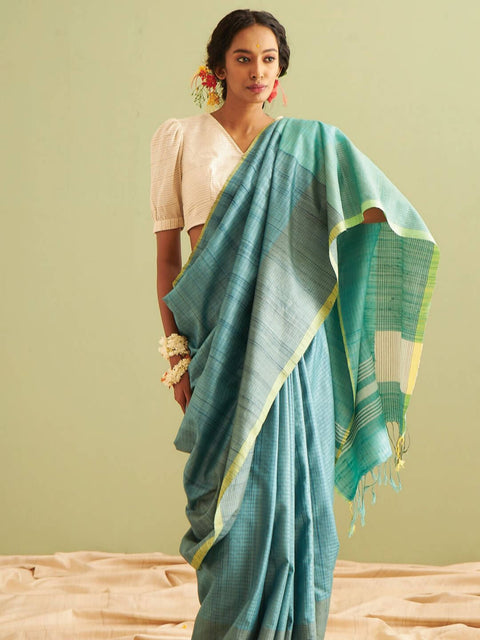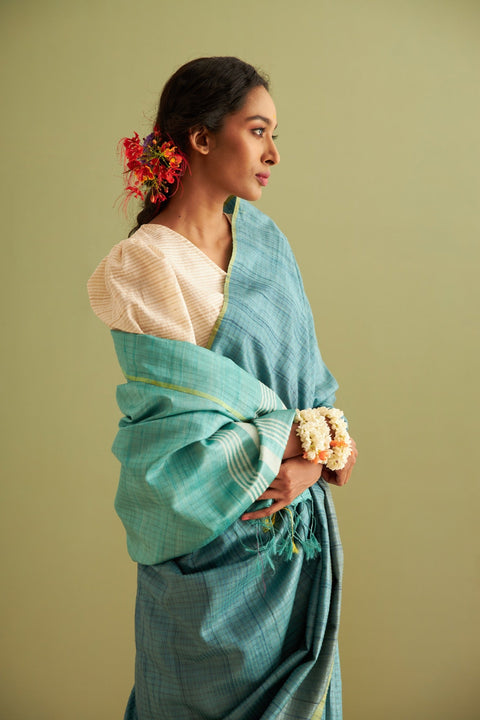
Table of Contents
As we witness fast fashion growing in popularity and environmental concerns rising, consumers are looking to purchase textiles that are not only beautiful, but ethical and sustainable too. Recently, Kosa silk has been garnering attention among eco-friendly fashion enthusiasts as an unsung hero - a coarse, refined, native desi Tussar silk, rich in Indian tradition.
But is Kosa silk sustainable? Let’s unpack the facts about this golden fabric, originally from Chhattisgarh.
What is Kosa Silk, and How is it Made?
Kosa silk is made from an Indian silkworm called Antheraeae mylitta, and it can only be found in the forests of Chhattisgarh. Kosa is recognized as a type of Tussar silk and is noted for its earthy colors, coarse texture, and very muted shine.
Kosa silk is different from pretty much every other textile not just because it is silk, but because of the traditional and eco-friendly approach to the silk-making process. You might ask yourself, “But what is traditional and eco-friendly, anyway?” The answer lies in these components:
-
Silkworms feed on forest leaves, not cultivated mulberry.
-
Low-impact and traditional methods are employed when tribal communities rear, harvest, and reel the silk.
-
The yarns are typically dyed by hand using plant or natural dyes.
-
Kosa silk is woven using a traditional hand loom and does not utilize the fossil fuels of industrial textiles.
What Makes Kosa Silk Sustainable?
There are many elements that make Kosa silk an ethically sustainable textile choice:
Rearing without Environmental Harm
Kosa silk is produced by wild silkworms inside their natural habitat, residing in their native forests. No monoculture farming, no synthetic feed, no artificial environments, allowing for the ecosystem to be maintained and preserved for the sake of Kosa silk.
Made by Handloom
Because most Kosa silk sarees production happens with a hand loom, or simple loom, energy is used only at the dyeing and weaving stages through electricity and possibly some basic tools. This method has the lowest emissions related to fossil fuels, and now we are also supporting India's artisans and weavers.
Natural Dyeing Practices
Weavers of Kosa sarees use vegetable and plant-based dyes to produce Kosa sarees and scarves, as they are much more mindful of the environment and much safer for the skin. The use of vegetable dyes also reduces possible chemical runoff and potential water pollution.
Minimal Production Waste
Kosa silk production is a low-waste process. When fabric is woven, leftover yarns are typically used, either within that same project or another completely different project. The cocoons' husks are biodegradable, and they can be used to either produce yarn, or even make compost (which can then be be used as dyes). Pure tussar silk sarees, especially handwoven ones, contribute significantly less to textile landfill waste.
Provides a Livelihood for Indigenous People
When you buy Kosa silk, you are supporting local artisans and tribal communities in central India, who use silk weaving as their income. This is a craft that is passed down the generations, provides jobs to people, and preserves cultural heritage.
Is Kosa Silk Vegan?
Not really. Like other silk fabrics, Kosa also involves boiling the cocoon to get the fibers, effectively killing the pupa inside. However, an Ahimsa (non-violent) version of silk (also known as Tussar silk) is now produced by allowing the moth to eclose (emerge) before the cocoon is harvested. This version of pure tussar silk sarees appeals to ethical consumers who prefer cruelty-free fabrics.
Why Sustainable Designers Love Kosa
The fashion industry is slowly shifting towards products that are authentic and based on storytelling and Kosa silk provides the best of both worlds:
-
Natural texture that supports artisanal fashion
-
Dyes beautifully with organic colors
-
Climate/micro-climate; changing throughout the seasons and breathability
-
A wonderful pairing with minimalism, earthiness and handcrafted looks
Designers focused on slow fashion, ethical sourcing, and cultural storytelling increasingly turn to plain tussar silk sarees and pure tussar silk sarees for both aesthetic and sustainable reasons.
How to Verify Authentic Kosa Silk
If you want to be buying Kosa produced sustainably, here are a few things you can do:
-
Look for Chhattisgarh based weavers or certified handloom vendors.
-
Identify its rough texture and rustic hues; be cautious of anything that feels too synthetic or overly shiny.
-
Ask sellers how their dyes are dyed and weave spun.
-
Purchase from eco-conscious brands that are transparent about sourcing.
Final Thoughts
While Kosa silk may lack the exude of Banarasi silk and the pure smoothness of Mulberry Silk, there is strength and natural charm in its own right, and that’s what makes it so special. It is made by mindful hands from natural materials that are blessings of nature, and made in ways that are in line with nature’s protocols that make Kosa silk one of the most sustainable silk choices in India.
So, the next time you reach for a luxurious drape or a mindful fashion choice, remember that Kosa silk is more than just a coordinated piece of fabric. It's representative of sustainability, culture, and craft.



